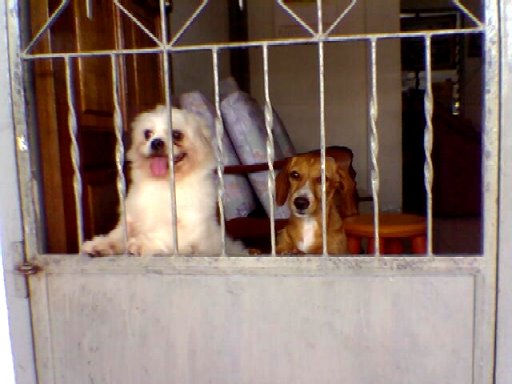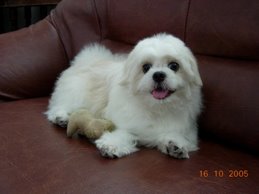How To Manage Dog Knuckling
Knuckling in dogs includes moderate to severe symptoms and must be vet evaluated to determine the best treatment plan. There are multiple causes for canine knuckling, each requiring a specific form of intervention to prevent extreme risk and possible life threatening complications. Dog knuckling can be treated with the correct approach and taking the proper action at the earliest stage can make the biggest difference in the lives of affected canines.
Knuckling in dogs is easily identified by the manner in which animals walk including the shape of the knuckles. When canines knuckle, their ability to walk evenly is compromised leaving them to hobble or limp and not place their full weight evenly on all four paws. Upon lifting a limb, you will notice how the animal is unable to position their feet correctly.
Canines that do not walk correctly may be suffering from an injury to the paw including the presence of a thorn that is preventing them from placing their full weight on the foot. Always check the toes and pads of the feet to detect any obstacles that may be causing problems in movement. If pets have suffered a fracture, they will need the assistance of a professional vet to provide the correct treatment.
Disk deterioration is a major cause of knuckling as it begins to place pressure on the spinal nerves and could be caused by injury or age. When dogs are impacted by such injuries, it will leave them unable to move in a healthy and flexible movement. When dogs are affected by advanced stages of this form of damage, the impact includes an inability to walk correctly and paralysis over time.
When your canine companion reaches his or her senior life stage they are at increased risk of suffering from a condition referred to as myelopathy. The deterioration of the myelin sheath will impact the nerves and dogs start to drag one or both back legs. Eventually your pooch will not be able to lift themselves and pets can suffer complete paralysis without much option for restoring their function.
To manage the condition of knuckling, it is important to determine the underlying cause for the symptoms. If you have a pet with a foot injury or fracture, the canine must be kept off the leg and provided the appropriate standards of aftercare. While a multitude of pets will recover from injuries including minor sprains and strains, any open wounds should be treated by a professional vet.
Dogs that are showing signs of deterioration including malformed joints must be provided nutrition supplements and supportive therapy to restore balance. A visit to the professional vet will assist in determining the best approach to achieving full function and alleviating the problems associated with abnormal development. It can provide canines with knuckling the appropriate standards of treatment.
When dogs are knuckled, it is important to see a vet. A professional can perform diagnostic tests to determine the causes for the symptoms and appropriate supportive solutions. With such methods available, your pet can benefit from quality care to relieve distress and ensure quality and not quantity of life is achieved.
Knuckling in dogs is easily identified by the manner in which animals walk including the shape of the knuckles. When canines knuckle, their ability to walk evenly is compromised leaving them to hobble or limp and not place their full weight evenly on all four paws. Upon lifting a limb, you will notice how the animal is unable to position their feet correctly.
Canines that do not walk correctly may be suffering from an injury to the paw including the presence of a thorn that is preventing them from placing their full weight on the foot. Always check the toes and pads of the feet to detect any obstacles that may be causing problems in movement. If pets have suffered a fracture, they will need the assistance of a professional vet to provide the correct treatment.
Disk deterioration is a major cause of knuckling as it begins to place pressure on the spinal nerves and could be caused by injury or age. When dogs are impacted by such injuries, it will leave them unable to move in a healthy and flexible movement. When dogs are affected by advanced stages of this form of damage, the impact includes an inability to walk correctly and paralysis over time.
When your canine companion reaches his or her senior life stage they are at increased risk of suffering from a condition referred to as myelopathy. The deterioration of the myelin sheath will impact the nerves and dogs start to drag one or both back legs. Eventually your pooch will not be able to lift themselves and pets can suffer complete paralysis without much option for restoring their function.
To manage the condition of knuckling, it is important to determine the underlying cause for the symptoms. If you have a pet with a foot injury or fracture, the canine must be kept off the leg and provided the appropriate standards of aftercare. While a multitude of pets will recover from injuries including minor sprains and strains, any open wounds should be treated by a professional vet.
Dogs that are showing signs of deterioration including malformed joints must be provided nutrition supplements and supportive therapy to restore balance. A visit to the professional vet will assist in determining the best approach to achieving full function and alleviating the problems associated with abnormal development. It can provide canines with knuckling the appropriate standards of treatment.
When dogs are knuckled, it is important to see a vet. A professional can perform diagnostic tests to determine the causes for the symptoms and appropriate supportive solutions. With such methods available, your pet can benefit from quality care to relieve distress and ensure quality and not quantity of life is achieved.
About the Author:
When you are looking for information about dog knuckling, come to our web pages online today. More details are available at http://www.canine-mobility.com now.
>














.jpg)






.jpg)

0 comments:
Post a Comment